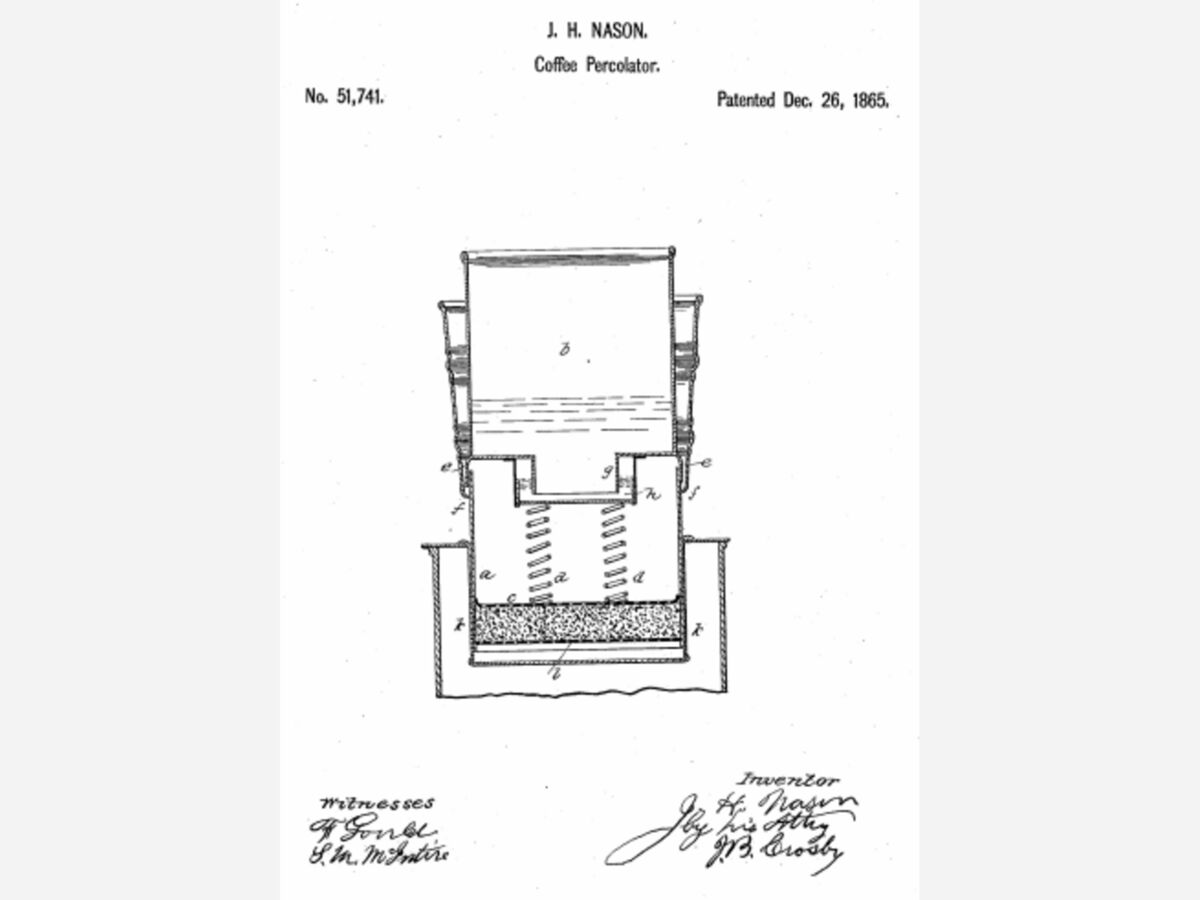Image

The old adage about success having many fathers (or mothers) and failure being an orphan might explain the large number of people supposed to have invented the percolator in one form or another.
For the drip grind and latte generation, the percolator and its familiar sound, whether stove top or electric, was probably the most popular way to make coffee until the 1970s when a succession of technical improvements and more sophisticated consumer tastes changed the game.
Woburn-born scientist, Benjamin Thompson, 1753-1814, who chose to keep a British identity and later was made Count Rumford when he moved to Bavaria, has one of the best claims to be the percolator inventor.
Franklinite James H. Nason did patent a percolator in 1865, as noted, and its distinguishing features were the inventor’s determination to preserve the aroma of coffee in all its deliciousness.
In his patent application, he wrote:
“Various percolators or filters of more or less practicability are in common use for obtaining clear beverages from coffee without the use of fining substances; but all of them, so far as I know, are defective in construction, in that they permit the escape of the aroma from the coffee during or subsequent to the process of percolation,
“My filter or percolator is designed to obviate this defect by interposing between the coffee chamber and the vessel through which the water passes to this chamber fluid joints, which shall prevent all escape of the volatile principle from the coffee when the apparatus is in use, and it is in this construction that my invention consists.”
The device he proposed would have been complicated and expensive, demanding metalworking of a high order. And there is no indication that he or anyone else ever tried to manufacture it.
But, fortunately, he seems to have had other things to sustain him and pay the bills.
Born in Franklin on Dec. 28, 1835 to George and Peacy Nason, James, by then listed as a resident of New Bedford and an artist, married a woman of that city, Ophelia Parker, in 1858 and seems to have resumed residence in Franklin sporadically thereafter. Some of his brothers served in the Civil War but he did not, it seems.
But he did get around. According to his obituary, he began to live independently or at least to support himself at age 13 and before the age of 20 was employed by a maker of stereopticons in London, England. He also “went West” in pursuit of business opportunities, supposedly accumulating enough money to make him secure.
At the time of his death in 1892, in Philadelphia, of Bright’s Disease, he was retired to a degree, spending much time “in search of health” in Franklin and on Cape Cod. When he passed away, his body was embalmed and returned to Franklin for a funeral with family members serving as pallbearers.
The Sentinel reporter on the funeral wrote: “Always ...plain-spoken in conversationo, yet a congenial, companionable and lavishly liberal and warm-hearted man, as indeed is characteristic of the whole family. He was admired and respected by those who knew him, and the writer was among the latter. Mr Nason leaves a widow and one son, George F., who some fifteen years ago was a student at Dean Academy and is now doing a prosperous business in Athol, Mass.